by Stephen Stern
Harsh legacies and uncertain memories of 1948 entangle two families at the heart of The Admission, a new work by Israeli playwright Motti Lerner. The play had been years in development by its Israeli creative team and Washington DC’s Theater J–where it had its English language world premiere in March 2014. The setting is Haifa 1988, the first intifada rages and a “new” Israeli historiography is emerging. Two fictional Jewish-Israeli and Palestinian Arab-Israeli families are fatefully ensnared in a dramatic maze that leads back to pathways originating from 1948. The drama is inspired by what Lerner had heard whispered as he grew up in Zichron Yakov, concerning murderous events in the nearby Palestinian Arab village of Tantura, conquered in Israel’s War of Independence. His imagination was further fueled by controversies erupting in the late 1990s from disputed historical analyses and memories of the battle of Tantura, which became raging public controversy1 in the “Teddy Katz master’s thesis case” of 2000.
I’ve been a commentator on the play’s development and worked on discussion programs that followed performances of the play in March through May. In preparation for the play’s public discussions, I traveled again to Israel in January 2014 to deepen my understanding of all that flows from 1948 and the responses of Jews and Arabs. I traveled north along the coast road from Tel Aviv, to the seaside town of Tantura, some 20 miles south of Haifa and just northwest of Zichron Yakov, the Jewish town in the hills above.
Let me frame this inquiry with what seems known with certainty–the Palestinian Arab village Tantura was conquered on May 23, 1948, little more than a week after the Declaration of the State of Israel. The Alexandroni Brigade of the Haganah (to be formally absorbed within another week into the newly formed Israel Defense Force) was victorious in battle in which at least 13 of its soldiers were killed. Dozens of Palestinian Arabs were killed during or after the fighting. The remaining population of Tantura was evacuated from the village to nearby Fureidis in Israel or to Tulkarm (briefly under Iraqi army control in what is now the West Bank), and into Lebanon or more distant exile. Israelis established Moshav Dor and Kibbutz Nahsholim on the site of the former Tantura.
Beyond that, there are diverging narratives. The Admission explores fundamental questions of how we remember and forget–and go on living with our cruel inheritance from disputed history. Were those dozens of deaths in Tantura in fact many dozens of deaths? Did these deaths occur inevitably in battle or were there “extra-combat” killings and abuses? Does digging into the murky depths of past blood conflict heal and lead forward, or deepen wounds and widen the breach? Do personal encounters with present reality, and navigating narratives of a disputed past lead us any where near historical certainty? Or does all this leave us with questions that we are compelled to ask, even if never definitively to answer?
I drove to Tantura with The Admission’s set and costume designer Frida Shoham, and members of my family. The play’s director, Sinai Peter met us there with two Palestinian Israeli citizens of Fureidis–Samir, a man of about 60, a descendant of Tantura, and his daughter Yasmin (a theater student of Sinai’s in Haifa). Father and daughter met us at their ancestral home to talk about what was known, about what was forgotten or lost in a still silence, and about disputed events that took place here in 1948. We spent some hours together walking through Moshav Dor; seeing contemporary remainders and reminders of the former Tantura; looking at old photographic images; and uncovering difficult remembrances of Samir’s and Yasmin’s ancestral village.
Our single afternoon of meeting and discussion with two descendants of a lost village cannot prove or disprove what happened more than 65 years ago in a village by the sea. It is their personal experience–which they were eager to share–into the totality of what happened. In their accounts of the loss of Tantura, we heard a narrative that is in part consonant with some Palestinian writing on the subject and the oral testimonies of survivors2, and in part supported by information in Israeli archives3.
At the parking lot in front of the Moshav Dor resort hotel, Samir shares a sheaf of photocopies of old Tantura, including some 1948 images.
Samir and Yasmin spoke from the parking lot on which we had just met, of village women and children being gathered together here on this very spot. They identified it as the location from which the final evacuation from the village was organized on May 23, 1948–and the place from which a large group of the men of Tantura were marched after the battle to the cemetery near two buildings in the background.
Two buildings that were the Tantura glass factory, now restored and refurbished for Kibbutz Nahsholim use.
They believe that these men had been shot to death in the adjacent village cemetery by Alexandroni brigade soldiers–who then forced five other village men to bury the dead. One of the five, an uncle of Samir’s, had feared that his execution was next–but told Samir of being saved by the intervention of the “Jewish mukhtar” of Zichron Yakov. This is the basic villagers’ story that has come down through many decades of near silence from Tanturans remaining in Israel.
Samir told of his childhood visits with his mother to the former village, where in the 1950s intact buildings and ruins were slowly adapted for re-use or disappeared. The sense of lingering fear and possible retribution–along with gratitude from survivors who were saved by their Jewish neighbor–kept all but a few nearby villagers away and silent.
Samir identified what looks like a seawall pounded by the sea as the remnants of villagers’ homes–the family names known to him.
Samir’s family had possessed the ability and early desire to go back to their former home to visit. Occasionally, as traces of buildings and village spaces were becoming subsumed into the growing Israeli Jewish communities, an elder would seek to return and remember life there. But the grandchildren of Tantura grew up hearing little of what had been. Even Yasmin, whose father held such memories of the past, only began to feel a stake in her scattered village’s forgotten existence as she was becoming a young woman. On the road to Fureidis stood a memorial to the Alexandroni soldiers lost in battle. On the moshav, we saw no memorial to the events in Tantura.
We did spend time at a shrine within the moshav dating from before 1948–a tomb, without signage, in which a revered Sheikh and his family are buried.
Shrine on Moshav Dor for Sheikh of Tantura who died before 1948.
Ancestors of the sheikh come Thursday nights to light candles at the gravesite. As Yasmin entered the burial vault, someone from the moshav yelled out, “Watch out, don’t disturb the Sheikh.” Yasmin gestured that she could handle it.
The moshav had considered demolishing the sheikh’s tomb to build “tzimmer” (guest rooms) for tourists on this prime seaside plot. Samir recounted village lore in which the spirit of the Sheikh rose to thwart the bulldozers each time they came, until finally the shrine was left alone.
Instead of demolition of the Shrine, Moshav Dor built about a dozen “tzimmer” for tourists in the style of the Sheikh’s tomb.
As we got into the rhythm of enjoying a beautiful day and each other’s company, we walked and talked of loss, destruction, and getting on with life–who had left Israel, who had married well. Yasmin asked a question of the group (or maybe just of me), “Do you think you can find me an Islamic husband?” Then to her father, “What if I married a Jewish one? Or a Christian one?” Samir shrugged with some exasperation and amusement. With extra sparkle Yasmin asked, “Would you kill me?” “No way,” said the father’s perturbed but unambiguous gesture.
Samir and Yasmin were able to joke about sensitive items with apparent ease, and with abundant affection.
Samir clearly admired his daughter’s wit and focus. This was the third generation growing up knowing very little–now intensely determined to discover, and find ways to share, as much as possible of what had happened to Tantura.
For Sinai, “Yasmin is wonderful…she is Samya (the Palestinian character moving forward on the quest that ignites the character Giora in The Admission)… but without the difficult love interest.”
Yasmin was proud that her father was willing to come and talk and open up to us–and indeed to her. Among the group of inhabitants who had settled in Fureidis, Samir had unique spatial and narrative insight into the village that was conquered a few years before he was born. Most of the families of Tantura had disappeared into Tulkarm, Lebanon, Syria, or Europe. But Samir was a guardian of many of their stories–some of which Yasmin was also hearing for the first time.
Samir spoke of a formative moment in one exiled uncle’s Tantura boyhood. That boy peered out from the beach at his diabetic uncle half-submerged in the water while fishing. The boy was unaware that the amputee had removed his prosthetic legs. That lost uncle of distant memory emerged and hobbled on stumps toward shore, his catch of fish tied to his waist and hanging to the water below. In the boy’s mind’s eye, it was as if a wall of fish was devouring the elder, or maybe it was all some kind of monster arising from the sea and beyond. For the rest of his life that boy could not face going near either fish or sea.
In 1995 (“Rabin times”), a different uncle of Samir’s, exiled in Lebanon and then Europe, obtained the necessary permits and returned for the first time since his youth. He went in to swim and found embedded at seaside a sizable fragment of the town fountain–a marker of that place where as a boy he played every day with his friends. Samir watched him fall to his knees, pick up the fountain fragment and pour the sand which covered it onto his head–crying endlessly for all that had been lost.
Property that belonged to the Mukhtar of Tantura.
The boats and autos belong to fishermen from Fureidis, Some of the men are of Tanturan ancestry.
The contemporary working relationships between Fureidis and the moshav and kibbutz were in evidence as we talked and looked. Some work as guards, or have jobs at the summer resort. The old mukhtar’s building and boat landing sites are reserved by the moshav for use by the fishermen of Fureidis.
But there is little talk of Tantura. The three remaining survivors in Fureidis maintain silence, although Yasmin is working on one of them to tell her story.
As our time together was ending, we delved further into this fear of unveiling memories, the self-silencing (in different ways) by all communities concerning depths of inhumanity that might have happened here. I engaged with Yasmin and Samir on fundamental questions about whatever did take place, how did it come to be. Some villagers were killed in battle, but what happened after the battle and why? I told them I had heard speculation from Jewish sources that a “spontaneous revenge incident” might have occurred in response to the post-surrender killing of Alexandroni fighters by one or more of the men of Tantura5. Of this the father and daughter knew nothing. They asserted their belief that stories of mass rape were essentially not true, with one exception. In revenge for the killing of one of the soldiers (away from the battle’s main action) a relative of the mukhtar was shot and a woman in his family raped and also murdered.
At one point, Yasmin asked, “Why here? Why was it so important to come to this little place and destroy and take all this away from us.” I talked about the Israeli historical perspective, the desperate “war of the roads” had intensified in April/May as independence approached and convoys battled in savage fighting, with terrible acts of retribution on both sides, to lift the Arab siege on convoys taking supplies to the Jewish neighborhoods of Jerusalem. On May 15, the fighting widened as five invading Arab armies attempted to stifle the new State. I told them of my thesis that posits an Iraqi army drive toward the sea with Tantura intended as ideal base to seize control of the north-south road network5. Samir joked, “Hh you were there and you remember these battles,” and then, “This is the way it is with the memories and the stories. One side sees it one way and another the other.”
My explanation spoke of the importance and intensity of the fighting for Israeli independence, and the real fears among Jews. But it did little to explain a fog of silence stretching over years, interrupted fitfully by fragments and transmitted haltingly, often fearfully, by exiled refugees. So I asked, “What do you think? Whatever the Jewish fighters did, do you see it as cold-blooded murder–or in the excess of the soldiers’ own fear, dead friends and weariness, a losing of control…” Before I could finish the thought, Yasmin repeated in English, “Cold-blooded murder.”
Frida interjected that it was more important to find ways to go on than to “know” what happened. So we continued to grapple in this discussion with the value of surfacing stories needed to find some solace, some respect, some place of possibility. Yasmin spoke of a moment when Teddy Katz was researching and reaching out, that some shred of hope to get closer to the essential, to come to terms with the past, was awakened in some Tanturans. Ultimately the wall of silence deepened even further in light of the Katz controversy, the attacks on his credibility, and the legal consequences that followed.
I did not directly encounter Alexandroni Brigade veterans or their families during this visit. But I thought about them, and their plight, on a visit to the Haganah Musuem to discuss its exhibit and documentary video on the history of those times. The video begins with footage of a flourishing Israel that should not be treated as though it had always been there–existing as a well-protected safe haven. Organized watchmen who began an improvised self-defense on behalf of a trickle of Jewish refugees coming to the land, morphed through bitter experience into the IDF of 1948 and beyond, dedicated to the preservation of hard fought for nationhood. The tone used to describe Palestinian Arab residents and neighbors was sober, not disrespectful. But they were not depicted there as living in their own reality, but as obstacles to the establishment of the state that would be the Jewish national home.
The Yitzhak Rabin Center (which I had previously toured some months before it opened) captured much more of the total reality. Rabin’s incredible life journey in defense of Israeli sovereignty ends with him reaching and grasping, at the cost of his exemplary life, for an end to bloodshed. This was embodied in the central corridor that traces Rabin’s singular life’s path. That path is intersected by a series of hallways that branch out into the broader social and cultural events of each of the six decades of his adult life. The Palestinian presence, though filtered through a strong Israeli narrative, was there–fittingly marked with red “dilemma flags”–a signal, and an invitation, not to be afraid to look at what has challenged and what has split Israeli society.
So, on one seaside afternoon, we had accepted the challenge of sharing experiences with two vibrant fellow people from within that split society, exploring their own silenced stories. Those stories and all the myriad Israeli and Palestinian stories, like Rabin’s, reach and grasp, sometimes desperately. They hold meanings from the past that might shape a promising future for all who live between the river and the sea. There are fragments, whispers that still speak, and that can be heard if we listen. These are essential notes in the cacophonies and the symphonies that are the soundscape of the present. I think it right and necessary to find respectful ways to courageously explore what time and human difference have hidden. This necessity aspires to be a quest to contribute to securing an elusive and much hoped for future. Those of us moved by the dramatic exploration that is The Admission live in that hope.
One of the most beautiful, most visited, beach locations in Israel; Nahsholim Sea Side Resort, Nahsholim
Stephen R. Stern works on public programs and projects about cultures and communities in conflict. He lives in Washington, DC and frequently spends time engaged in both Israeli and Palestinian communities.
[1] Benny Morris, perhaps the most important Israeli historian of the last 30 years, does not find sufficient evidence or indications from fragmentary evidence that a “massacre” took place at Tantura, but he returns in many of his books and essays to his feeling that this may well be a place where “atrocities” from the Jewish side took place. His 2004 Jerusalem Report article is a nuanced examination in which Morris visits the area, meets with Katz and survivors, and weighs and explicates the evidentiary material from an historian’s point of view (http://www.ee.bgu.ac.il/~censor/katz-directory/04-02-06morris-the-jerusalem-report-tantura.pdf).
There is a lively open discussion among Israeli historians about what is suspected and what can be established about the scope and meaning of 1948 events at Tantura and other Arab population centers, as well as the impact of attacks on Jews by Arabs. Those who opposed Theater J’s presentation of this play have used the slander trial verdict, and questions about Katz’ motives and scholarship as the last word on Tantura. They do so, in my view, to distort and deny the ongoing discussion and disputation in order to narrow what it is “permissible” to consider. The indict our dramatic exploration with charges of a “blood libel’ about a “made-up massacre” which “defames Israel.” They demand that Jewish institutions funded by “Jewish charitable funds” should not allow such a presentation or such open discussion to take place under their auspices.
[2] The Journal of Palestine Studies (Spring 2001) (http://www.palestine-studies.org/enakba/Memoirs/Al%20Wali,%20The%20Tantura%20Massacre.pdf) pp. 5-18 summarizes several Palestinian references to the Tantura events. It speaks both of historian Walid Khalidi’s exchange in the 1960s concerning “the methodical shooting of 40 village young men” and of Khalidi’s failure to mention the “massacre” in his 1992 book All That Remains. The article then excerpts a series of 2000 interviews of Tanturan refugees in exile in Syria. The Journal cites them as evidence that supplements earlier reports “albeit from the inevitably fragmented and narrow perspective of individual villagers caught in the vortex of events beyond their capacity to comprehend.” They are replete with fear and assertion of witnessing a variety of killings in and around the village. Several of the testimonies do report a similar core story of a group of young men being taken away and executed after the battle.
[3] Israeli historian Alon Confino’s essay, “Miracles and Snow in Palestine and Israel: Tantura, a History of 1948” is found in the journal Israel Studies (Summer 2012) pp. 25-61 (http://www.jstor.org/stable/10.2979/israelstudies.17.2.25?origin=JSTOR-pdf). It focuses on “forced migration” as a common occurrence in war and contains a well-sourced cultural and historical meditation from multiple vantage points on what might have happened, and why, in Tantura. Of special interest are photos from the Yossi Offer, Kibbutz Nahsholim, and Israel Defense Forces archives, which show the separation of a group of men being marched away, as the women and the children are being gathered to go into exile (pp 44-45).
[4] This was my attempt to find a motive for something that–when attributed to the Haganah–I balked at its credibility. In a number of conversations in Israel or the United States when I have asked about actions in battle in Tantura or elsewhere that might provoke soldiers (Israeli or otherwise) to go on a killing spree, I have heard “post-surrender” violence as the possible trigger. In my far from exhaustive historical review, I could find no hard evidence of such an incident in Tantura. The closest reference to something that could be like this is in Benny Morris, 1948: First Arab-Israeli War (Yale University Press 2008) page 452, note 281 refers to the Tulik Makovsky Diaries in Kibbutz Nahsholim on the post-battle execution of “captured snipers” as the one piece of contemporaneous documentary evidence (for Morris the evidentiary “gold standard”) of post-battle Tantura killing he had found.
[5] Morris, 1948, page 251 references mid-May Syrian and Iraqi Army plans to drive toward the Mediterranean at Haifa or Netanya, “thus cutting the Jewish state in two or at least isolating the north”. By May 22, the Iraqi Army was in Tulkarm, about 10 miles from the Mediterranean. Thus my thesis that Tantura, a village in active resistance on the coast road about equidistant from Haifa and Netanya would be a key choke point in any Iraqi army thrust.

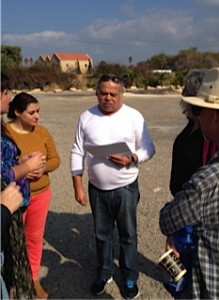
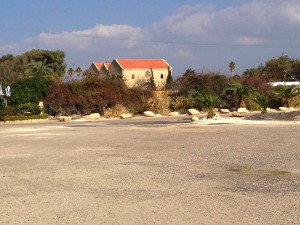
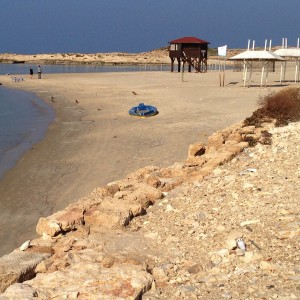
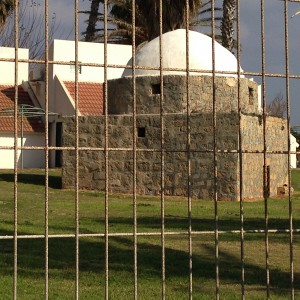
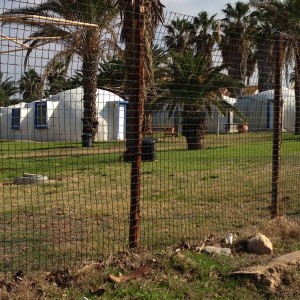
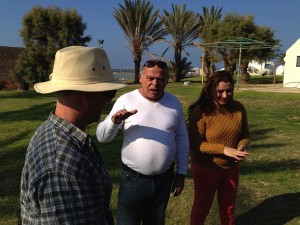
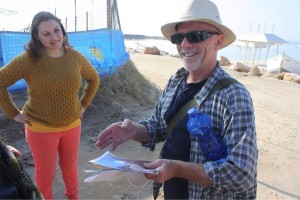
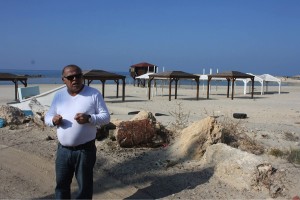
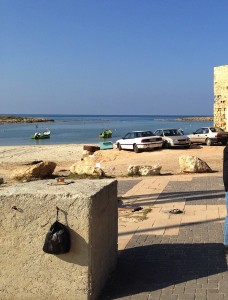
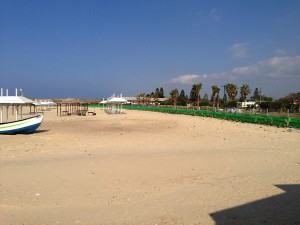
One thought on “A Visit to Tantura”